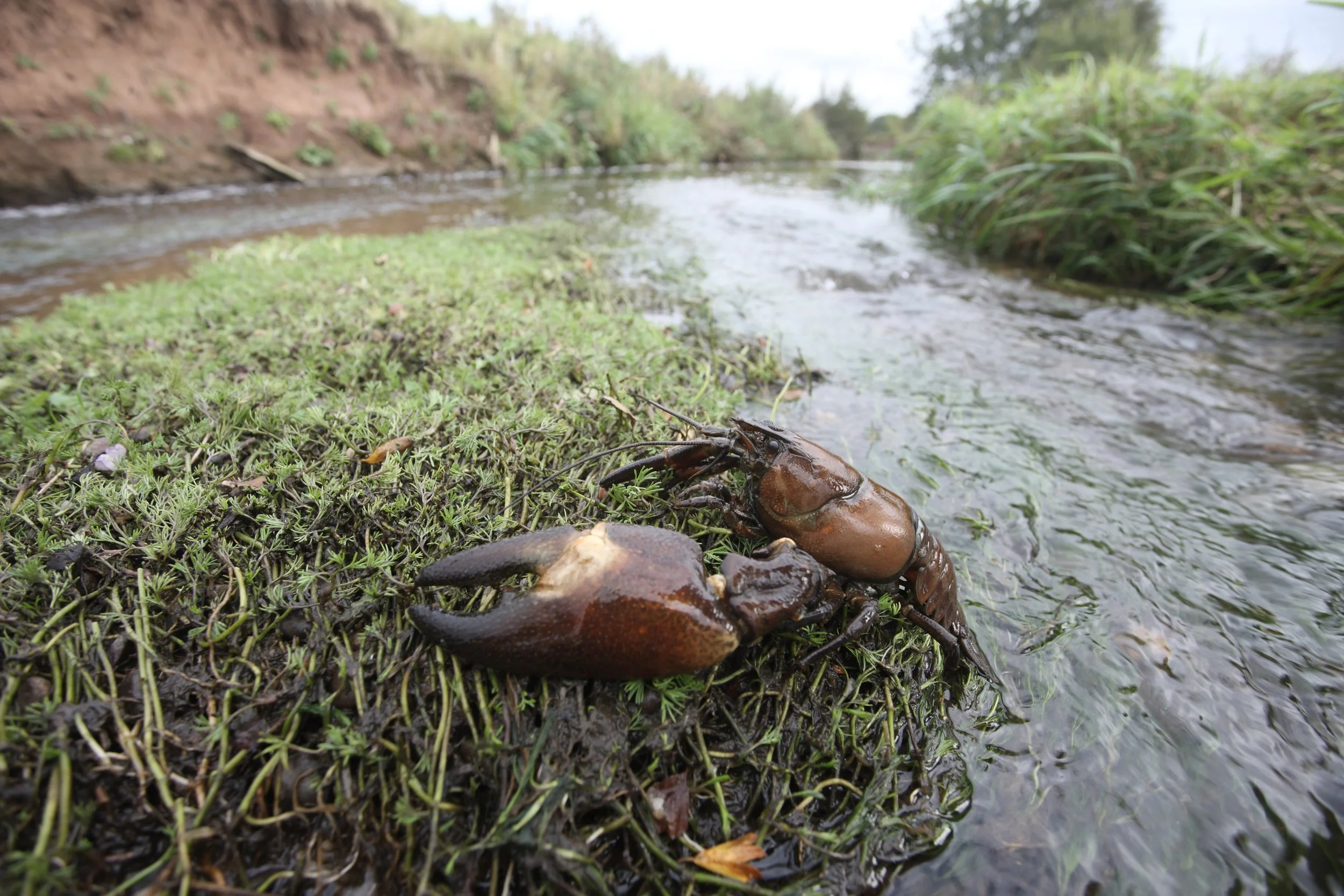Uncovering the Missing Crayfish
On a summer morning in western Montana, long before the archival notes were sorted and the manuscript accepted for publication, Hamp Kennedy stood ankle-deep in the Bitterroot River. Sunlight moved across the water. A stone shifted beneath his feet. And there, nudged gently by the current, was the creature he had spent months trying to find only in the historical record.
A crayfish.
It was a fitting moment for a teacher who has always felt at home in two worlds: the quiet order of the archive and the unpredictable rhythm of the outdoors. Kennedy, chair of Miller School’s history department, is known on the Hill for his thoughtful classes, his dry wit, and his willingness to follow a good question wherever it leads. Two years ago, that curiosity took him more than two thousand miles from Old Main to the mountains and river valleys of Montana, where a long-standing ecological puzzle had gone unsolved.
The U.S. Forest Service had been wrestling with an uncomfortable question: Are Montana’s crayfish native, or were they introduced? The answer matters more than most people realize. Biologists manage species differently depending on their origins, and crayfish, fascinating but destructive engineers of riverbanks, have real implications for erosion, fisheries, and conservation.
The signal crayfish whose history is now known because of Mr. Kennedy’s research.
But the problem was simple and frustrating. Western Montana’s crayfish were “cryptogenic,” a scientific term for species whose origins are murky. Modern surveys did not go back far enough. Early biologists had never studied them. Oral histories were inconsistent. The trail was cold.
So the Forest Service turned to a historian.
Kennedy joined the project as a research fellow under biologist Susan Adams, part of a team that believed history might hold answers biology could not reach. “Primary historical sources and indigenous knowledge are seldom used to clarify the status of aquatic species,” Adams noted. “But sometimes they are exactly what is missing.”
For Kennedy, the challenge was irresistible.
Much of his work began in silence: old dictionaries compiled by missionaries in the early 1800s, travel journals from the Lewis and Clark Expedition, fur-trade accounts, and thousands of pages of nineteenth-century newspapers. What he expected to find at least once was mention of crayfish in Montana.
Instead, he found nothing.
“I thought it was strange,” Kennedy recalled. “Travelers in Idaho and other parts of the Columbia River Basin mentioned crayfish frequently. But in Montana, from the early 1800s into the late nineteenth century, the sources were quiet.”
That absence became his first clue.
If crayfish had been common, someone would have noticed them. Someone would have named them. Someone would have described catching them, cooking them, or using them as bait. But journals, dictionaries, and surveys that catalogued every other fish in the river said nothing at all.
Around 1900, Kennedy began to see a shift. Western Montana newspapers, almost overnight, started reporting crayfish sightings. Articles from the 1930s described them with wonder, as if encountering something new. The break came in a 1944 story from the Missoulian, which explained that two individuals had imported a thousand live crayfish years earlier to use as fish food in their bass ponds.
“That was the smoking gun,” Kennedy said.
Further research revealed additional introductions near Bozeman in the late nineteenth century, where non-native signal crayfish still persist today. The earliest mention west of the Continental Divide did not appear until 1934. In short, early historical sources documented their absence, and twentieth-century newspapers documented their arrival.
It was exactly the kind of evidence the scientific team needed and no one had pieced together.
Under Adams’s guidance, Kennedy traveled to archives at Montana State and the University of Montana, met with state fisheries officials, and continued filling in the historical gaps. The project eventually numbered more than 10,000 pages of reviewed material.
Last year, their findings were published in WIREs Water, a peer-reviewed journal for aquatic research. The article, titled “Interdisciplinary Approaches Improve Understanding of Cryptogenic Species: A Historical Case Study of Crayfish in Montana, USA,” demonstrates how historical research can reshape modern ecological management.
Kennedy jokes that he never expected his first academic publication to appear in a science journal, but his work underscores a larger idea: questions that seem scientific on the surface often depend on the humanities to uncover their full story.
Bitterroot River in Montana—home to Mr. Kennedy’s research and discovery.
For Miller School students, the project has already made its way into Kennedy’s classroom. His U.S. history curriculum now includes environmental perspectives and encourages collaboration across disciplines. He supervised a student-led archival project last spring that researched the school’s architectural and environmental history, preparing for Historic Garden Week on campus.
“Being on the receiving end of peer review has made me better at giving constructive feedback,” he said. “And the whole experience reminded me how connected history is to the world around us.”
Outside the classroom, Kennedy remains the same outdoorsman students know well, whether canoeing the Rivanna, fly-fishing local streams, or exploring the trails on campus.
But the Montana project offered something rare: the chance to solve a genuine historical mystery that had lingered for decades. It showed how a careful eye, a patient mind, and a willingness to chase a good question can lead to discoveries.
For the Miller School community, it is a reminder that curiosity remains one of the most powerful forces in education.



